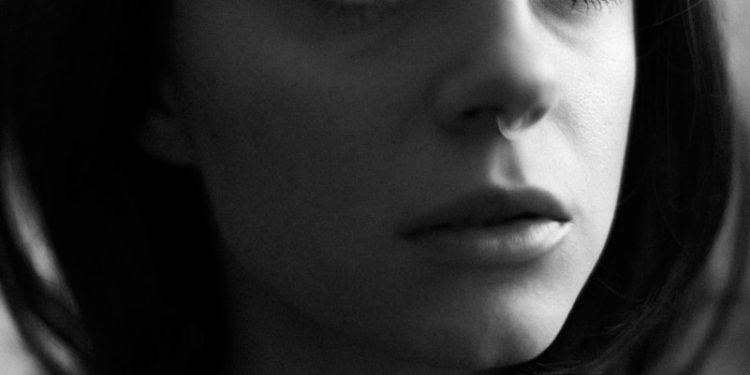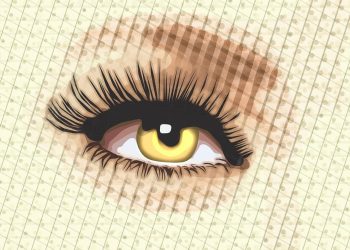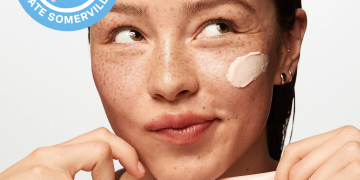Contouring has revolutionized the beauty world, offering a transformative way to define and enhance facial features. While the technique can seem intimidating, understanding how to contour according to your specific face shape can make all the difference. With the right products and techniques, you can sculpt and highlight your features to achieve a natural, flattering look. This guide will walk you through the science and art of contouring, tailored to various face shapes.
The Basics of Contouring
Contouring involves using makeup products to create the illusion of shadows and light on the face. Typically, contouring products are one to two shades darker than your skin tone to add depth, while highlighting products are one to two shades lighter to emphasize certain areas.
Tools You’ll Need:
- Contour Product: Choose a cream or powder contour depending on your preference and skill level.
- Highlighter: A luminous or matte highlighter enhances specific areas of your face.
- Brushes/Sponges: Angled brushes, blending brushes, and beauty sponges ensure precise application and seamless blending.
- Setting Powder: Locks your work in place for a polished finish.
Identifying Your Face Shape
Before diving into specific techniques, it’s essential to determine your face shape. Here are the most common face shapes and their defining features:
- Oval: Balanced proportions with slightly wider cheekbones and a narrower jawline.
- Round: Full cheeks, similar width and length, with softer angles.
- Square: A broad forehead, prominent jawline, and equal width across the face.
- Heart: A wider forehead and cheekbones, narrowing to a pointed chin.
- Long (Oblong): Elongated shape with similar width across the forehead, cheeks, and jawline.
- Diamond: Narrow forehead and jawline with wider cheekbones.
Contouring Techniques for Each Face Shape
1. Oval Face
Oval faces are considered the most versatile, as they’re naturally balanced. Contouring for this shape focuses on subtle enhancement.
- Where to Contour: Apply contour along the sides of the forehead, under the cheekbones, and lightly along the jawline.
- Highlighting: Focus on the center of the forehead, bridge of the nose, under the eyes, and the chin.
- Blending Tip: Use soft, circular motions to ensure the contour blends seamlessly into your natural skin tone.
2. Round Face
The goal for round faces is to create the illusion of more defined angles and a longer appearance.
- Where to Contour: Sweep contour along the sides of the forehead, under the cheekbones, and along the jawline. Extend the contour slightly under the chin to elongate the face.
- Highlighting: Apply highlighter to the center of the forehead, under the eyes, and along the bridge of the nose.
- Blending Tip: Blend upward to lift the features and avoid dragging the product downward.
3. Square Face
Contouring for square faces softens strong angles and creates a more oval appearance.
- Where to Contour: Focus on the sides of the forehead, under the cheekbones, and along the jawline, emphasizing the corners to minimize width.
- Highlighting: Brighten the center of the forehead, under the eyes, and the chin.
- Blending Tip: Blend outward toward the hairline to avoid harsh lines while maintaining structure.
4. Heart Face
Heart-shaped faces benefit from balancing a wider forehead with a narrower chin.
- Where to Contour: Apply contour along the sides of the forehead and temples to reduce width. Add contour below the cheekbones and lightly on the chin to soften its point.
- Highlighting: Brighten the center of the forehead, under the eyes, and the middle of the chin.
- Blending Tip: Blend contour upward on the cheeks and outward at the temples for a harmonious look.
5. Long (Oblong) Face
For oblong faces, the aim is to create the illusion of width and balance out the length.
- Where to Contour: Apply contour along the hairline at the top of the forehead, under the cheekbones, and lightly along the jawline. Focus on the tip of the chin to shorten the face.
- Highlighting: Brighten the center of the forehead and under the eyes, avoiding excessive highlight on the chin.
- Blending Tip: Blend contour horizontally to add width and soften the face’s elongated appearance.
6. Diamond Face
Diamond-shaped faces benefit from contouring that balances wider cheekbones with a narrower forehead and jawline.
- Where to Contour: Focus on the sides of the forehead and under the cheekbones. Lightly contour the point of the chin to reduce its prominence.
- Highlighting: Brighten the center of the forehead, under the eyes, and along the bridge of the nose.
- Blending Tip: Blend contour outward from the cheekbones to maintain the natural symmetry of the face.
Choosing the Right Products
Formulas
- Powder Contour: Ideal for beginners and those with oily skin, as it’s easier to blend and build.
- Cream Contour: Great for dry skin or a more dramatic look. It offers a natural, skin-like finish.
Shades
- Choose a contour shade one to two tones darker than your skin tone with a cool or neutral undertone to mimic natural shadows.
- Select a highlighter shade that is one to two tones lighter, opting for a luminous finish for added radiance.
Tips for a Flawless Finish
- Prep Your Skin: Begin with a clean, moisturized face. Apply a primer to create a smooth base.
- Start Light: Use a light hand when applying contour and build gradually to avoid overdoing it.
- Blend, Blend, Blend: Seamless blending is key to natural-looking contour. Use a damp beauty sponge or a fluffy brush for best results.
- Set Your Work: Use a translucent setting powder to lock in your contour and highlighter, especially if you have oily skin.
- Practice Makes Perfect: Contouring takes time to master. Experiment with different techniques to find what works best for your face shape.
Enhancing Your Look with Additional Techniques
Adding Dimension with Bronzer
Bronzer can add warmth to your contour, enhancing your overall look. Apply it lightly over areas where the sun would naturally hit your face.
Incorporating Blush
Blush adds a healthy flush to your complexion. Place it on the apples of your cheeks, blending upward toward your temples for a lifted appearance.
Highlighting Strategically
For a luminous glow, use a shimmery highlighter on the high points of your face, such as the tops of your cheekbones, the bridge of your nose, and your brow bone.
Common Contouring Mistakes to Avoid
- Using the Wrong Shade: Too dark or too warm contour shades can look unnatural. Always test shades before application.
- Skipping Blending: Harsh lines can make contouring look obvious. Take time to blend thoroughly.
- Over-Highlighting: Excessive highlighter can make skin appear greasy rather than radiant.
- Ignoring Your Face Shape: Using a generic contour technique without considering your face shape can lead to less flattering results.
Mastering the art of contouring takes practice, but with these tailored techniques and tips, you can enhance your natural beauty and achieve a flawless finish. By understanding your unique face shape and choosing the right products, contouring becomes an accessible and transformative tool in your makeup routine.










